The Human Power Plant experiment: how many hours of power generation a day?
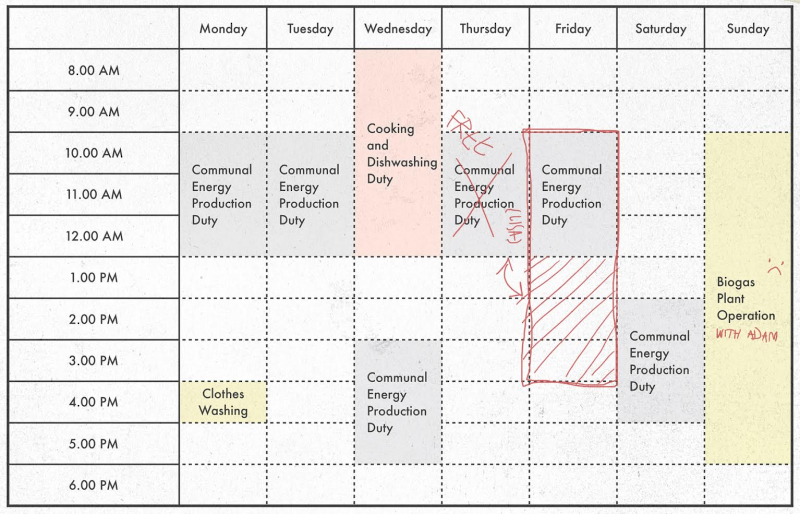
In this latest update on the Human Power Plant experiment, we learn just what a daily power generation schedule might involve when it comes to 750 students of Utrecht University literally producing their very own electricity.
Pioneered by Kris De Decker of Low Tech Magazine and artist Melle Smets, we’ve been following the progress of this project over the past nine months (find links to our earlier installments to the right). Here’s a reminder of what this unique experiment represents.
The Human Power Plant investigates the possibilities of human energy production in a modern society. It is both a technical and a social challenge. A technical challenge, because there’s a lack of scientific and technological research into human power production. A social challenge, because unlike a wind turbine, a solar panel or an oil barrel, a human needs to be motivated in order to produce energy.
The lower floors of the students’ novel 22-storey accommodation block are dedicated to communal energy production in the form of power-generating gym equipment. This energy is used primarily to heat the building, warm water, power fridges, flush toilets, and power lights and other devices, including telephony and internet connectivity, in the shared spaces. As the length of time that students will need to exercise on these floors will depend on their overall demand for power there is likely to be a strong incentive to reduce energy demand.
So aside from the issue of sufficient motivation, what level of commitment to power generation is required on a day-to-day basis per student? The team have set out three potential scenarios, ranging from low to high demand and assuming 10 hours of continuous energy production per day, the exact workings of which would apparently be negotiated between the students themselves. The existence of a gravity battery in one of the former elevator shafts alleviates the need for night shifts and helps ensure as even as possible a spread of the student workforce during the day.
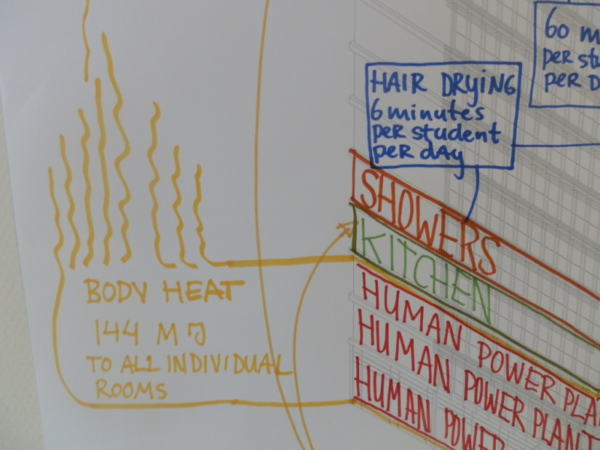
Scenario 1: energy conscious
- Total communal energy use: 112 kWh or 150 Wh per person per day
- Time spent on power production per student per day: 1.5 hours
- Number of people producing power simultaneously: 110 or roughly 1 in 7 students
- Conditions: cold showers, no hair dryers, hand-washing of dishes using cold water, outdoor drying of clothes regardless of weather
Scenario 2: moderate demand
- Total communal energy use: 224 kkWh or 300 Wh per person per day
- Time spent on power production per student per day: 3 hours
- Number of people producing power simultaneously: 220 so more than 1 in 4 students
- Conditions: 1-minute daily hot showers, limited use of hair dryers, hand-washing of dishes using cold water, outdoor drying of clothes regardless of weather
Scenario 3: energy intensive
- Total communal energy use: 448kWh or 450 Wh per person per day
- Time spent on power production per student per day: 6 hours
- Number of people producing power simultaneously: 440 so more than half of students (although the maximum capacity is 400 people)
- Conditions: 2-minute daily hot showers, use of hair dryers, use of dishwashers, limited use of clothes drying equipment
Even with the most energy-conscious scenario, let’s not forget the need for students to generate even more power for their individual use in their own rooms. How much time they choose to dedicate to this is entirely their choice.
We have estimated a maximum of 1-2 hours of personal power production per day (100-200 Wh), which is sufficient for lighting, computing and music if energy efficient devices are used. Communal and private work duties combined are thus 2.5-3.5 hours per day in the first scenario, 4-5 hours per day in the second scenario, and 7-8 hours per day in the third scenario.
Furthermore, there are work duties for clothes washing, biogas plant operation, and kitchen work. Clothes washing is estimated to be 1 to 2 hours per student per week, and is not powered by communal energy production. There is a two-weekly work shift for shopping, cooking and dish washing (if this happens by hand). Finally, once per month, every student needs to work an 8-hour shift in the biogas power plant.
Full details of the calculations are provided over on the Human Power Plant website, with specifics on everything from energy losses via the power-producing exercise machines to toilet flushing (I wonder here whether compost toilets could be a more attractive low-tech option?). Working on the basis that students are awake 112 hours per week and assuming an average of 8 hours of sleep each night, the project team claims that – depending on the scenario in question – the 20-40 hour remainder once taking into account power generation duties leaves students with plenty of time to study. However, in the event that students were also seeking to support themselves through a part-time job, for example, it seems unlikely.
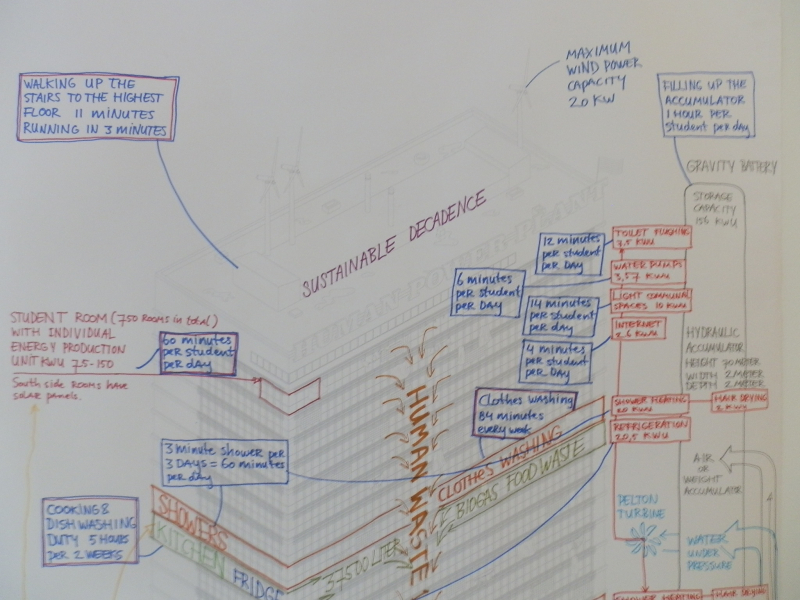
It may seem a tall order to some but perhaps there are some silver linings for the students: what the team have dubbed ‘sustainable decadence on the roof‘.
Located on the roof of the Human Powered Student building are ten Skystream windturbines. Together, these can supply 20 kW of power with a strong breeze (11 m/s). Whenever it’s windy, human energy production is taken over by the wind turbines. During windy periods, students thus enjoy free and effortless energy use. Daily working duties are reduced or eliminated.
So, as more details of what this human-powered student accommodation block would involve emerge, do you know a student who would be willing to take the plunge? We’d love to hear your thoughts…
 About the author
About the author
Sophie Paterson works as part of the Lowimpact.org team with a focus on social media and book promotion. She spent the past year living and volunteering on a farm in Devon. In any spare time she undertakes natural building work and training and attempts to keep up her Arabic language skills.
The views expressed in our blog are those of the author and not necessarily lowimpact.org's
1 Comment
-
1Mike Eaton February 22nd, 2018
Sadly whilst initially this seems an extremely interesting and good idea given mankinds attitude in general, over time as this gets adopted by well meaning individuals (and the fact that we will run out of alternate methods) I can see for many that the idea of excercising to produce power will pale compared to getting others to do it for them – enter that well known ancient device “the treadmill” powered by many less fortunate people than the “lazy”. In times past those people became something called a slave, they were fastened to the treadmill, fed occasionally and encouraged (by use of a whip etc.) to walk around in circles, life is after all for some very cheap.




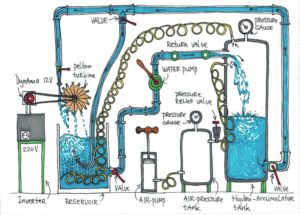 The great Human Power Plant experiment: an update
The great Human Power Plant experiment: an update
 Feeding the Human Power Plant: can calories be carbon-neutral?
Feeding the Human Power Plant: can calories be carbon-neutral?
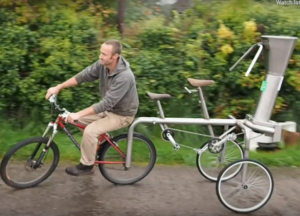 Introducing the Velojuicer – pedal-powered apple scratter
Introducing the Velojuicer – pedal-powered apple scratter
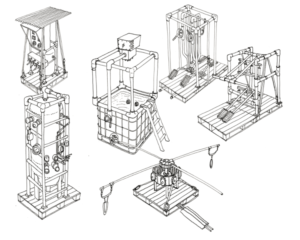 The great Human Power Plant experiment
The great Human Power Plant experiment
 Biogas
Biogas
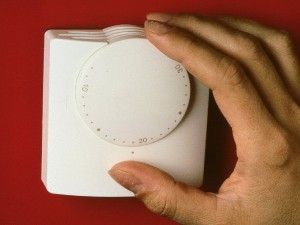 Energy saving
Energy saving
 Green electricity
Green electricity
 Low-impact energy
Low-impact energy
 Pedal-powered machines
Pedal-powered machines
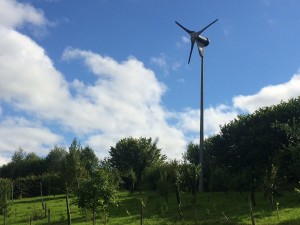 Wind generators
Wind generators


